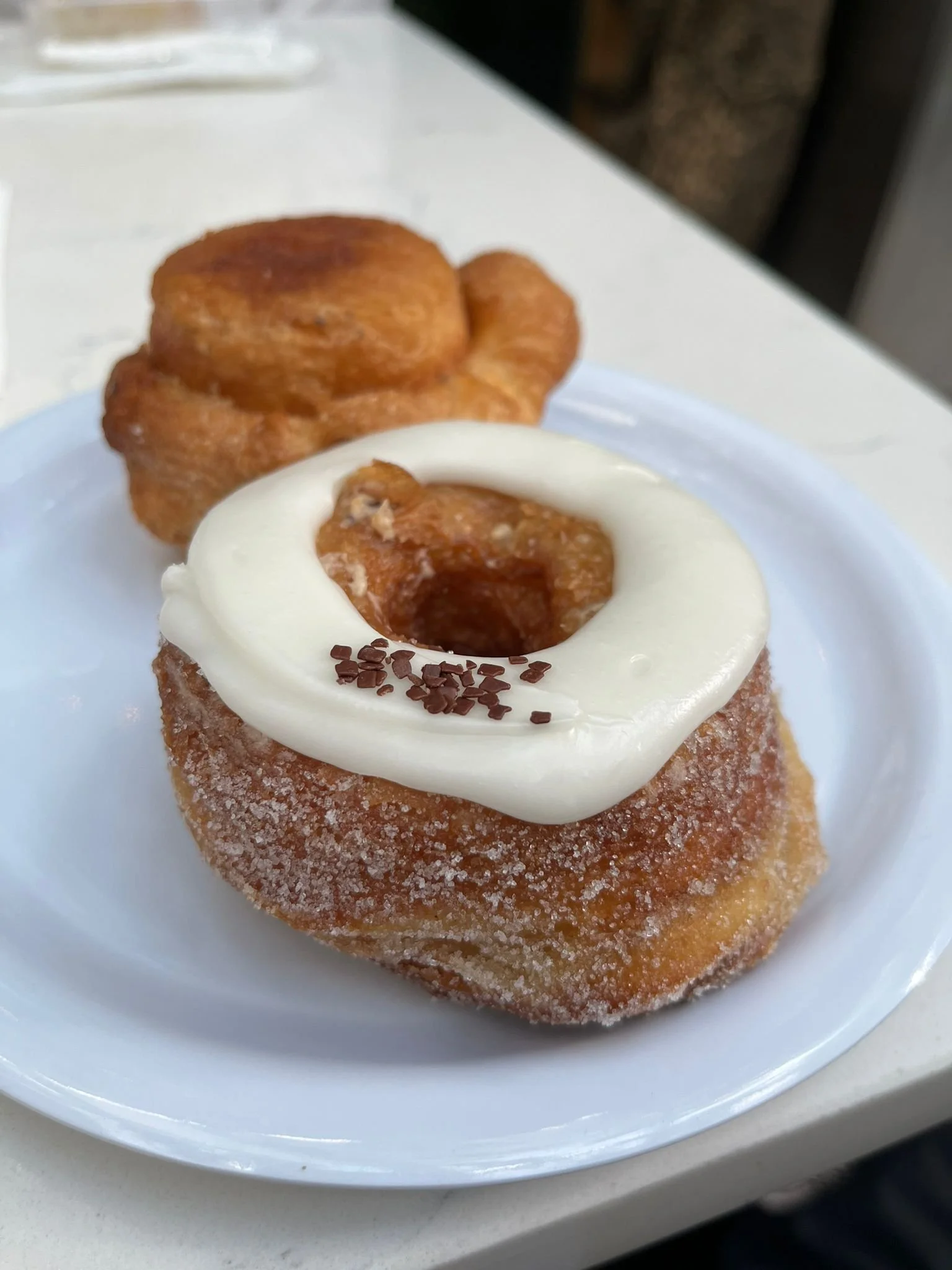A French Pâtissière tried the Cronut
Dominique Ansel Bakery, NYC
Last week, my dear friend Maud flew all the way across the Atlantic Ocean to visit me from France. She came for me, and for one other thing: the Cronut.
I met Maud at Restaurant Georges Blanc, where I worked during my gap year last year. My first morning at the kitchen, still feeling like an imposter in my white chef’s jacket and comically tall chef’s hat, I returned her curt enchanté and immediately got to work. My first job, she told me in rapid French that I strained to understand, was to clean the congel (freezer). I wiped down the congel feeling a little intimidated by Maud, but over the next four months, the strenuous kitchen culture drew us closer, and I’d like to think that she would have come to the US to see me even if there was no Cronut.
My first impression of the Cronut many months ago was lackluster. I definitely thought it was not worth a trip all the way down Manhattan for an incredible French pâtissière who only had one day to see the city. I am a fan of Maud’s pastry creations, and I always stuck around during her recipe testing to taste everything she made. She, I was sure, would not be impressed by the Cronut. But the Cronut held a permanent spot on Maud’s New York List, and I learned at Georges Blanc that arguing about food with someone who works in the kitchen gets you nowhere. So, off we went to Soho.
It’s impressive how Dominique Ansel has managed to make the artisanal craft of French viennoiserie into a cool, hip, instagram phenomenon, and even attract young French food devotees. Good for him, we said, as we waited in the long line at the understaffed register. The Cronut of the day was stracciatella. I got the DKA (Dominique’s Kouign Amann). I love kouign amanns so much that I’ve decided that this divine pastry will be my first tattoo.
We sat down in the bright, inner courtyard of the bakery with our two pastries on a white plastic plate. I took a photo of Maud and her Cronut: a monumental moment. She took a bite. I took a bite. We chewed for a bit in silence, waiting for the flavors to develop enough that we could make a comprehensive judgment.
“Bahhh, c'est différent (it’s different),” said Maud. The Cronut was heavier, oilier, more aggressive than the viennoiseries we had eaten together in France. The stracciatella cream was overpowering. “I would’ve liked to try a plain one,” Maud said, and continued eating. She thought that it was better than my DKA, which tasted and felt stale, the buttery dough no longer tender, but oily.
I was maybe a little bit deflated. I was ready to dissect the Cronut’s faults with Maud, but she had simply concluded that it was a “different,” heavier pastry and finished it without any more complaints. I was reminded of my own approach to having Japanese food outside of Japan; I think of the food as something entirely different from Japanese cuisine, and actually get to enjoy it that way. With croissants, though, I’ve been maintaining the same criteria set by the top couple of bakeries I encountered in France, maybe because I’m naively hanging onto the hope of encountering one more good croissant that will allow me a transcendental glimpse into the divine land of buttery flakiness. But few croissants have allowed me this, even in France.
The Cronut is a fried croissant, produced in very large quantities in Manhattan, for American customers and tourists. It’s not a croissant baked every morning for local regulars by an old artisan baker with decades of experience in the birthplace of the croissant (yes, I know technically it was born in Austria, but the French adapted it to what we know today). Thus, maintaining that criteria every time I have a croissant means condemning myself to near eternal disappointment. I cannot overstate my love for croissants, and I must keep chasing the best ones, but I don’t want to live with never-ending disappointment, either. I guess I’m still trying to find the balance.
